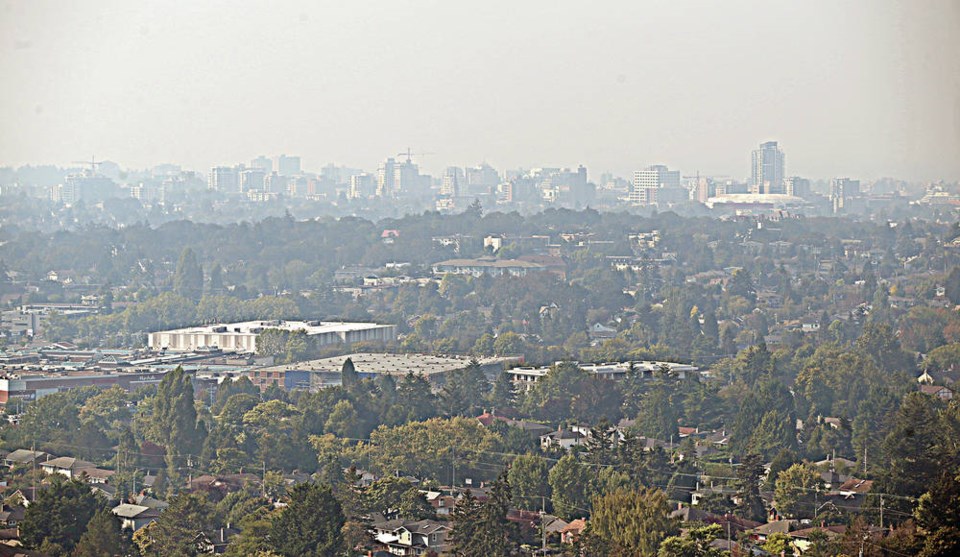Capital region residents woke to smoky skies Tuesday, most of it likely coming from wildfires in north-central Washington state.
The air-quality health index was nine at mid-morning, with anything seven or above considered high risk.
Environment Canada meteorologist Armel Castellan said smoke is rising from the wildfire area into plumes and travelling here at upper elevations. It then makes its way down to the surface.
“We’re seeing smoke that has come over from the mainland, ridden along the border region and then down over the Capital Regional District,” he said. “We can smell it and we can certainly see it.”
Castellan said the peak was expected to be around 9 a.m., followed by a gradual easing during the day, with the smoke being pushed over the ocean and then back into Washington state.
“There are a lot of fires in Oregon and Washington state right now, even over in Montana and not to mention in parts of the southeast of B.C.,” said Castellan, adding the smoke could return in the next couple of days or weeks. “It could come back and be an ongoing concern.”
Coastal Fire Centre spokeswoman Donna MacPherson, whose jurisdiction includes Vancouver Island, said there are no fires in the area that would be producing the amount of smoke being seen.
Air-quality sensors at Colwood City Hall and Topaz Park are finding above-normal levels of particulate matter, with Topaz at 87 micrograms per cubic metre in the morning. An acceptable level is considered to be less than 25.
“Wildfire smoke is a constantly changing mixture of particles and gasses, which includes many chemicals that can harm your health,” Environment Canada said in a statement.
Castellan said vulnerable people should take care, including the elderly, young children, pregnant women and those with chronic obstructive pulmonary disease or asthma.
“It’s the kind of thing where hospitals will generally see upticks in patient arrivals as a result of poor air quality,” he said. “Something not to take too lightly, of course.”
Smoky conditions can come with higher-than-usual temperatures, as is the case this time, Castellan said.
“For the next few days here, we’re going to have temperatures five to 10 degrees above normal.”



